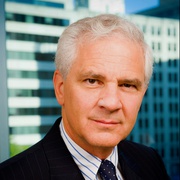
Operation Crossroads, “Baker Day” Underwater Atomic Bomb Test, Bikini Atoll, July 25, 1946. Frame 2 of a series of ground level views, taken about one-and-a-half seconds after detonation. U.S. Navy
Happy Birthday, Nuclear Arms Race
If we remember how we could have stopped it, we may yet find a way to do so.
If the nuclear arms race has a birthday, it has to be August 29. Seventy years ago, in 1949, the Soviet Union became the second nation to explode an atomic bomb, obliterating America’s monopoly on fission weapons. The world would never be the same.
Some might argue that the arms race actually began a decade earlier, in August 1939, when Albert Einstein sent President Franklin D. Roosevelt his famous letter. As urged by his fellow scientists, Einstein warned that new scientific discoveries suggest that “it may become possible to set up a nuclear chain reaction in a large mass of uranium” and so create “extremely powerful bombs of a new type.” They believed Hitler was already working on such a bomb.
But Hitler was not. Nor Japan. We were racing with ourselves. Einstein later called the letter “the one great mistake in my life.” Without the letter and with better intelligence, it is possible that the Manhattan Project would have never advanced beyond basic research. There would never have been an atomic bomb. We did not need it to defeat Germany or Japan. The atomic bomb was an historic accident.
Some might say that the arms race began 74 years ago, with the bombing of Hiroshima and Nagasaki. “Hiroshima has shaken the whole world,” Stalin told his scientists, “The balance has been broken. Build the Bomb — it will remove the great danger from us.”
Related: Nuclear-Powered Cruise Missiles Are a Terrible Idea. Russia’s Test Explosion Shows Why
Related: Nuclear Weapons Are Getting Less Predictable, and More Dangerous
Related: Two Ideas That Might Stop a Post-INF Arms Race, and One That Won’t
At the time, U.S. officials believed that it would take years for the Soviet Union to duplicate the American Bomb. Air Force leaders calculated that they would only ever need 60 atomic weapons, because there simply weren’t all that many targets. Still, after the 1948 coup in Czechoslovakia and the Berlin crisis that same year, President Truman ordered an increase in weapons production. By late 1949, the United States had more than 200 atomic bombs.
The Soviet test on August 29 shattered assumptions. The 20-kiloton test of a plutonium-based bomb dubbed “Joe-1” by U.S. intelligence was similar in yield and design to the weapons tested at Trinity and exploded over Nagasaki. U.S. officials panicked.
Truman, more fearful of the political consequences than the military ones, raised the stakes, accelerating the program to build the “Super,” or hydrogen bomb. David Lilienthal, chairman of the U.S. Atomic Energy Commission, wrote in his diary, “More and better bombs. Where will this lead...is difficult to see. We keep saying, ‘We have no other course’; what we should say is ‘We are not bright enough to see any other course.’”
Many of the scientists responsible for the first atomic weapons, including Robert Oppenheimer and James Conant, strongly opposed the “Super.” The AEC asked for the advice of its General Advisory Committee on the entire nuclear weapons program. Oppenheimer and Conant joined the unanimous opinion of the eight-member group against the hydrogen bomb.
They believed it to be a weapon of genocide: “The use of this weapon would bring about the destruction of innumerable human lives; it is not a weapon which can be used exclusively for the destruction of material installations of military or semi-military purposes. Its use therefore carries much further than the atomic bomb itself the policy of extermination of civilian populations.” Even if the Soviets developed the H-bomb, they argued, the United States could deter its use with atomic weapons.
These scientists’ views did not prevail. Truman asked if the Soviets could build an H-bomb. When told that they could, Truman believed that politically he had no choice. While publicly calling for the elimination of nuclear weapons and agreeing with then-Senate Majority Leader Scott Lucas, D-Illinois., that “the future of civilization depends on atomic control,” Truman secretly ordered the building of the H-bomb.
“The idea of achieving security through national armaments is, at the present state of military technique, a disastrous illusion,” Albert Einstein wrote in March 1950, “The armament race between the USA and the USSR, originally supposed to be a preventive measure, assumes hysterical character.”
Within a few years of the Soviet test, the United States detonated the first hydrogen device in the southern Pacific Ocean on Nov. 1, 1952. It was over 500 times more powerful than the Joe-1 or Nagasaki bombs, exploding with a force of 10.4 million tons of dynamite — 10.4 megatons. The Soviet Union tested its first fusion device a year later, on August 12, 1953. Weapons that scientists thought genocidal were soon deployed by the thousands.
This nuclear heritage is now our responsibility. Foolish suggestions, such as President Donald Trump’s fantasy that H-bombs could stop hurricanes or President Vladimir Putin’s fantasy of nuclear cruise missiles powered by mini-Chernobyls, trivialize the immense power of these weapons. They cannot destroy tropical storms but they certainly can incinerate cities. Simple steps such as renewing the soon-to-expire New START treaty and pledging never to be the nation that starts a nuclear war could get us back onto the track of nuclear threat reduction.
Our birthday wish? That we will be bright enough to find a new course.
NEXT STORY: Saudi Arabia and Israel Are Growing Closer. Why?
